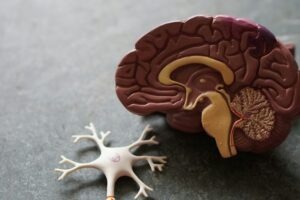The Committee for Medicinal Products for Human Use (CHMP) of the European Medicines Agency (EMA) has adopted a positive opinion recommending the approval of Marinus Pharmaceuticals’ ZTALMY (ganaxolone) oral suspension.

CDKL5 deficiency disorder (CDD) is characterised by early onset, difficult to control seizures besides severe neuro developmental impairment. Credit: Gerd Altmann from Pixabay.
Subscribe to our email newsletter
This recommendation is for ZTALMY to serve as the adjunctive treatment of epileptic seizures related with cyclin-dependent kinase-like 5 (CDKL5) deficiency disorder (CDD) in patients two to 17 years of age.
ZTALMY may be continued in those patients who are aged 18 years and more.
A serious and rare genetic disorder, CDKL5 deficiency disorder (CDD) is characterised by early‑onset, difficult‑to‑control seizures besides severe neuro‑developmental impairment.
Marinus chairman and CEO Scott Braunstein said: “The CHMP’s positive opinion reinforces the safety and efficacy profile of ZTALMY and is a testament to the tireless efforts and dedication of our team and the CDD community.
“This recommendation brings us one step closer to addressing a significant unmet need for CDD patients with treatment-resistant seizures in Europe. We look forward to the European Commission’s decision and working with our commercial partner, Orion Corporation, to bring this important treatment option to more patients who may benefit.”
This recommendation by the CHMP will be reviewed now by the European Commission (EC).
A final decision is expected to be taken by the EC within 67 days of receipt of the CHMP opinion and becomes applicable to all 27 EU member states besides Norway, Iceland, and Liechtenstein.
If ZTALMY receives approval, it will be the first treatment in the EU indicated for the adjunctive treatment of seizures associated with CDD.
It will be commercialised by Orion Corporation.
Marinus’ application for the approval of ZTALMY in CDD is backed by data from the Phase 3 Marigold double-blind placebo-controlled trial.
In this trial, 101 patients were randomised and treated with ZTALMY. It indicated a median 30.7% reduction in 28-day major motor seizure frequency, as against a median 6.9% reduction for those receiving placebo, thereby achieving the trial’s primary endpoint (p=0.0036).
 Advertise With UsAdvertise on our extensive network of industry websites and newsletters.
Advertise With UsAdvertise on our extensive network of industry websites and newsletters.
 Get the PBR newsletterSign up to our free email to get all the latest PBR
news.
Get the PBR newsletterSign up to our free email to get all the latest PBR
news.

